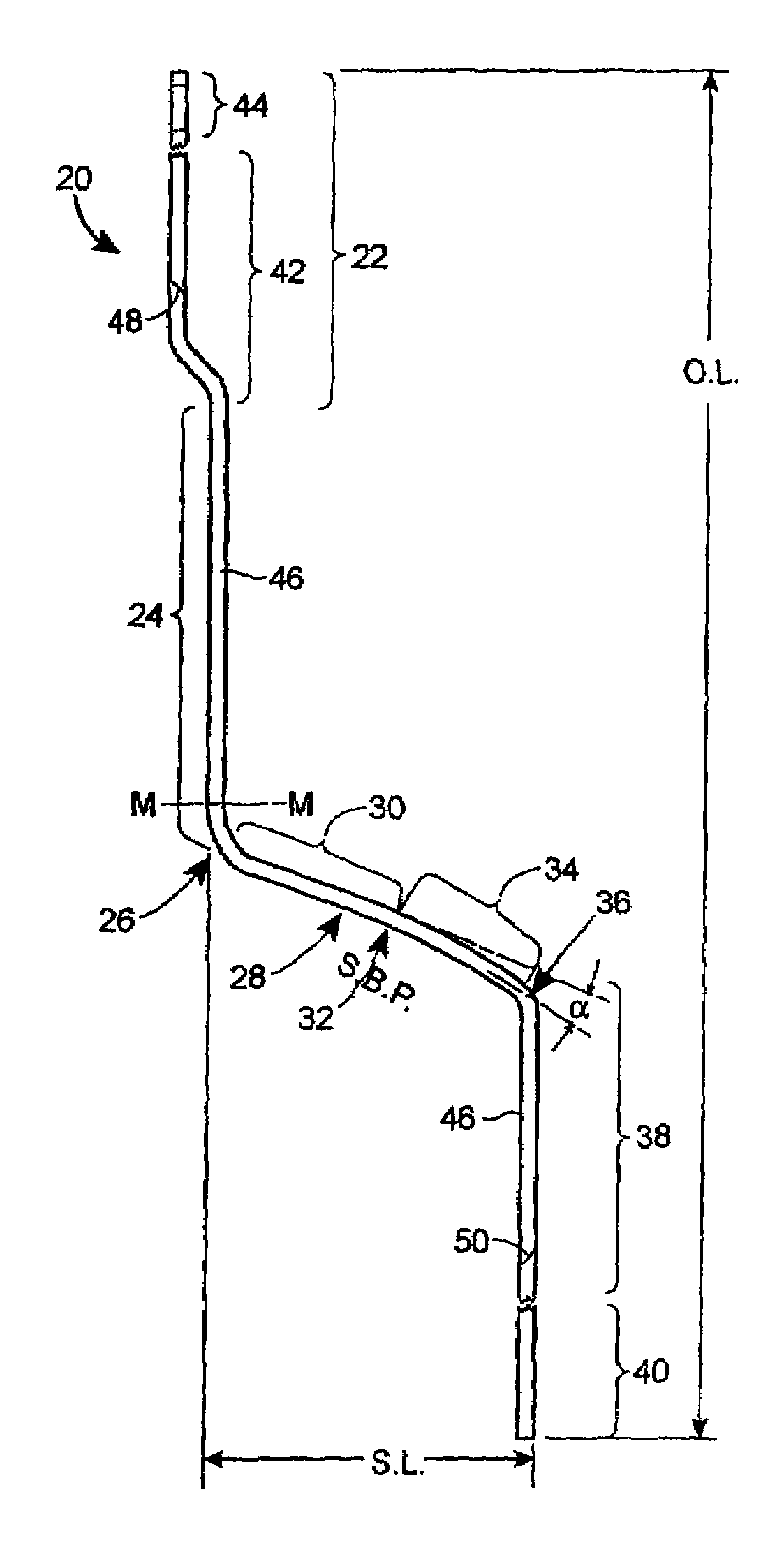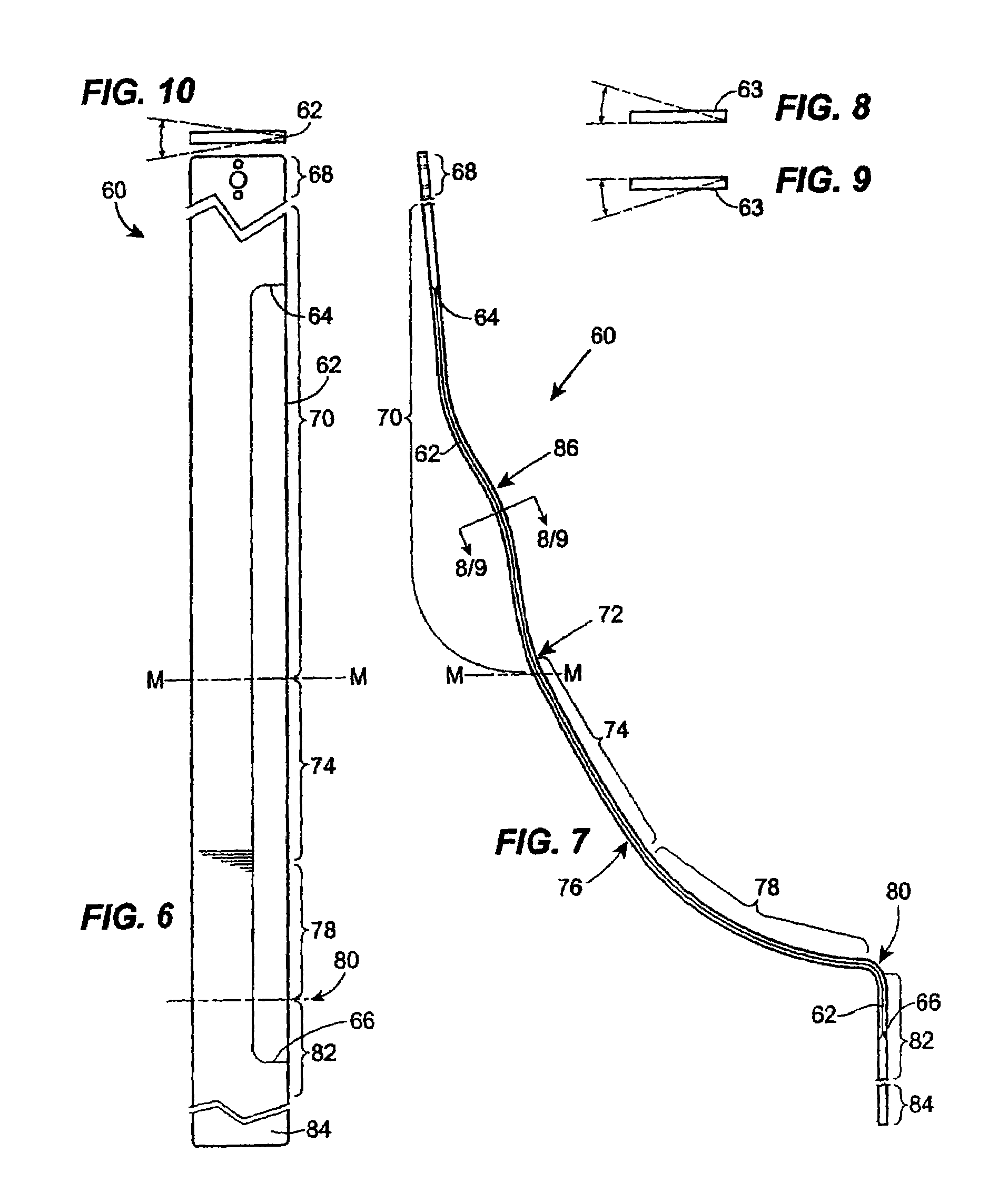Loin knife Z-blades for use with automatic loin puller apparatus
a technology of automatic pulling and z-blades, which is applied in the field of z-blades, can solve the problems of increasing the use cycle of such blades, increasing the number of hand-trimming operations downstream, and reducing the yield of belly, loin and fatback portions, so as to reduce the risk of rusting, and increase the yield
- Summary
- Abstract
- Description
- Claims
- Application Information
AI Technical Summary
Benefits of technology
Problems solved by technology
Method used
Image
Examples
Embodiment Construction
[0038]The present disclosure relates to dual loin knife blades that provide improved processing operating efficiencies and yields over the prior forms of Z-blades and J-blades as disclosed in U.S. Pat. No. 6,547,658, and further overcomes many of the deficiencies found in the blades, and their shapes and manufacturing methods.
[0039]Having reference to the drawings, wherein like reference numerals indicate corresponding elements, there is shown in FIG. 1 an illustration of a Z-blade member, generally denoted by reference 20. Z-blade 20 includes (from top to bottom in that Figure): an upper mounting portion, generally denoted by region reference 22; an upper central blade portion 24; an angle bend forming a rib bone radius portion 26; a shelf portion 28 comprising an upper initial or finger shelf portion 30, a relatively short shallow-angled shelf bend portion 32, and a lower or loin eye avoidance shelf portion 34 (hereafter the “LAS portion”); an angle bend forming a belly cutoff rad...
PUM
 Login to View More
Login to View More Abstract
Description
Claims
Application Information
 Login to View More
Login to View More - R&D
- Intellectual Property
- Life Sciences
- Materials
- Tech Scout
- Unparalleled Data Quality
- Higher Quality Content
- 60% Fewer Hallucinations
Browse by: Latest US Patents, China's latest patents, Technical Efficacy Thesaurus, Application Domain, Technology Topic, Popular Technical Reports.
© 2025 PatSnap. All rights reserved.Legal|Privacy policy|Modern Slavery Act Transparency Statement|Sitemap|About US| Contact US: help@patsnap.com



